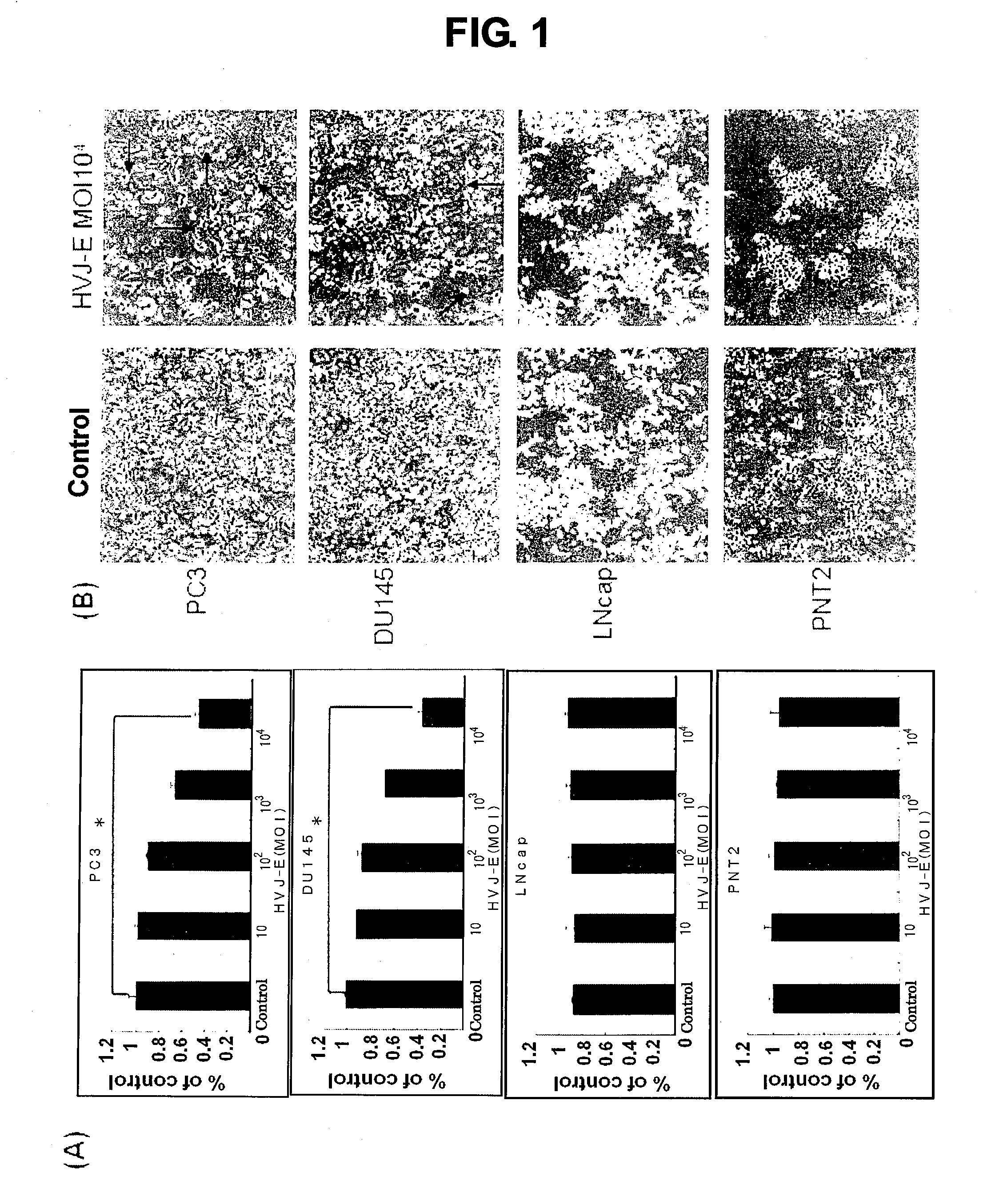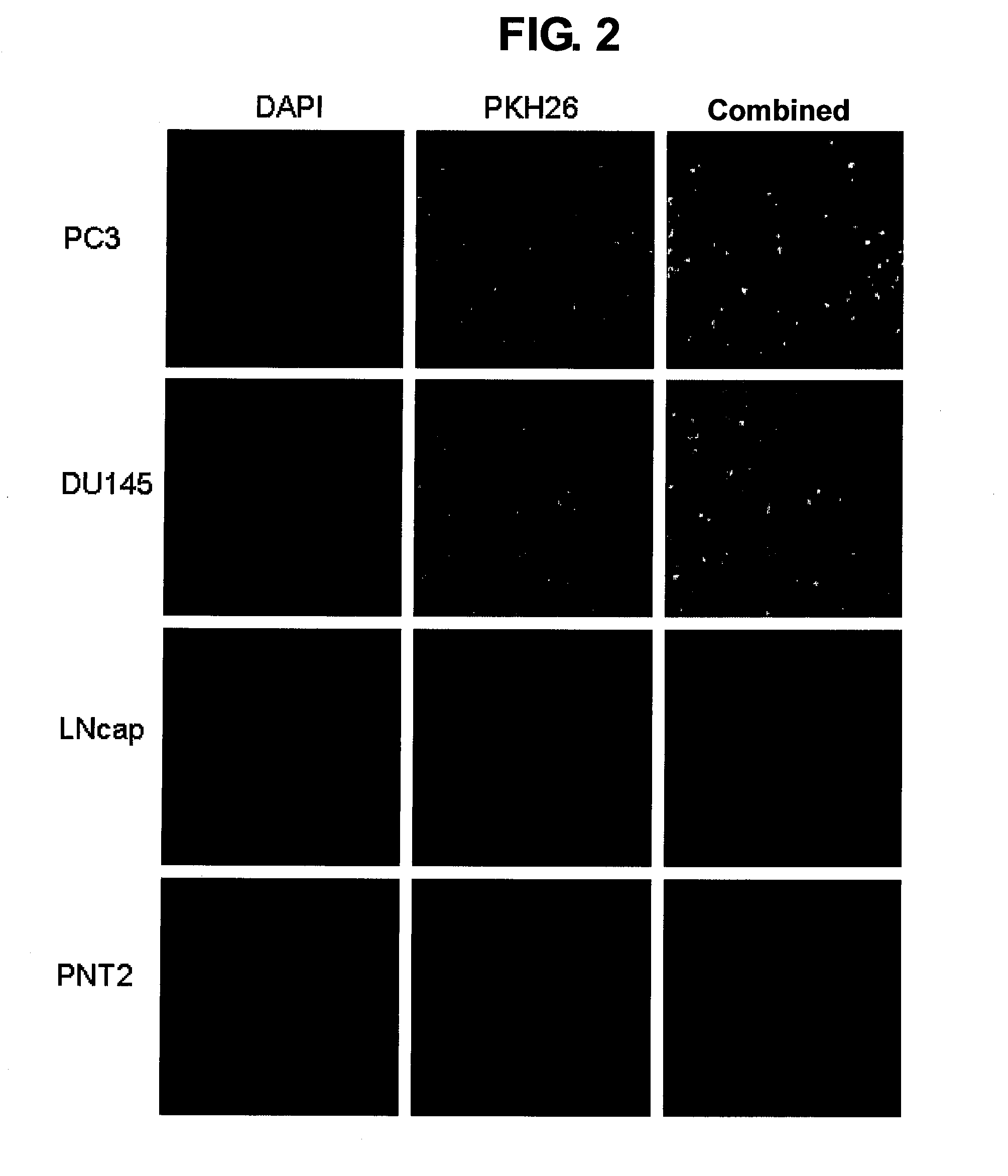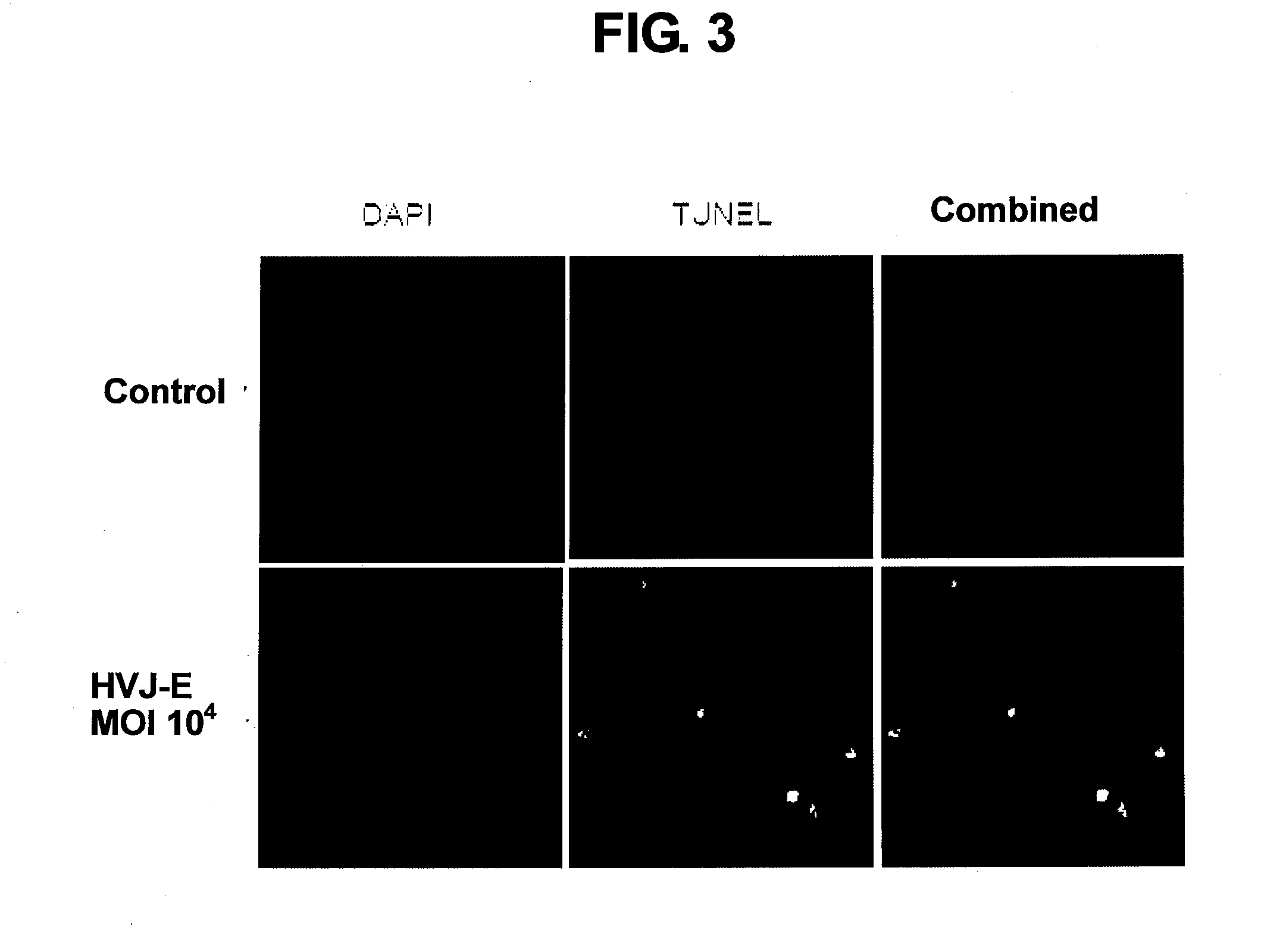Therapeutic/prophylactic agent for prostate cancer
- Summary
- Abstract
- Description
- Claims
- Application Information
AI Technical Summary
Benefits of technology
Problems solved by technology
Method used
Image
Examples
example 1
Preparation of Inactivated Sendai Viral Envelope Using Surfactant
(1: Proliferation of Sendai Virus)
[0108]Although Sendai viruses proliferated by inoculating a seed virus to a fertilized chicken egg are generally useful, those proliferated by utilizing a system for persistent viral infection of cultured cells or cultured tissues of monkeys, humans and the like (a hydrolase such as trypsin added to culture broth) and those proliferated by infecting cultured cells with a cloned viral genome to cause persistent infection can all be utilized.
[0109]In this Example, proliferation of Sendai virus was performed as described below. A seed virus of Sendai virus was proliferated using an SPF (Specific pathogen free) fertilized egg, and separated and purified; the resulting Sendai virus (Z strain) was dispensed to a cell preservation tube, and preserved and prepared in liquid nitrogen with the addition of 10% DMSO.
[0110]Chicken eggs just after fertilization were received, placed in an incubator ...
example 2
Antitumor Effect of Sendai Viral Envelope In Vitro
[0127]PC3 cells, DU145 cells and LNCap cells were purchased from the American Type Culture Collection (Rockville, Md.). The DU145 cells were cultured in the presence of 10% fetal bovine serum (FBS), 100 U / mL penicillin, and 100 μg / mL streptomycin in RPMI1640 medium (Nakarai Tesque, Kyoto, Japan). The PC3 cells were cultured in the presence of 10% FBS, 100 U / mL penicillin, and 100 μg / mL streptomycin in Dulbecco's modified Eagle F12 medium. All cell cultures were performed under humidified conditions of 37° C. and 5% CO2.
[0128]PC3 cells and DU145 cells, which are hormone-refractory prostatic cancer cells, and a non-hormone-refractory prostatic cancer cell line of LNCap cells, or normal human prostatic epithelial cells (PNT2) were seeded to respective 96-well plates at a density of 1×104 cells / well; 24 hours later, the cells were reacted with the Sendai viral envelope [multiplicity of infection (MOI): 10 to 104]. The cells were further ...
example 3
Combined Cell Adhesion and Cell Membrane Fusion Effect of Sendai Viral Envelope In Vitro
[0130]Hormone-refractory prostatic cancer cell line PC3 cells and DU145 cells, non-hormone-refractory prostatic cancer cells LNCap and normal human prostatic epithelial cells (PNT2) were seeded onto a polyethylenimine-coated cover glass placed in each 6-well plate at a density of 2×105 cells / well. The following day, the cells were reacted with PKH26-labeled Sendai viral envelope (MOI 104) at 37° C. for 60 minutes, after which the cells were twice washed with PBS, and fixed by 4% paraformaldehyde treatment (15 minutes, 4° C.). After the cell nucleus was counter-stained with DAPI, the cells were examined using a confocal microscope (magnification rate ×200).
[0131]These findings demonstrated that the Sendai viral envelope exhibits an adhesion potential and membrane fusion potential for hormone-refractory prostatic cancer cells (FIG. 2).
PUM
| Property | Measurement | Unit |
|---|---|---|
| Time | aaaaa | aaaaa |
| Therapeutic | aaaaa | aaaaa |
| Frequency | aaaaa | aaaaa |
Abstract
Description
Claims
Application Information
 Login to View More
Login to View More - R&D
- Intellectual Property
- Life Sciences
- Materials
- Tech Scout
- Unparalleled Data Quality
- Higher Quality Content
- 60% Fewer Hallucinations
Browse by: Latest US Patents, China's latest patents, Technical Efficacy Thesaurus, Application Domain, Technology Topic, Popular Technical Reports.
© 2025 PatSnap. All rights reserved.Legal|Privacy policy|Modern Slavery Act Transparency Statement|Sitemap|About US| Contact US: help@patsnap.com



